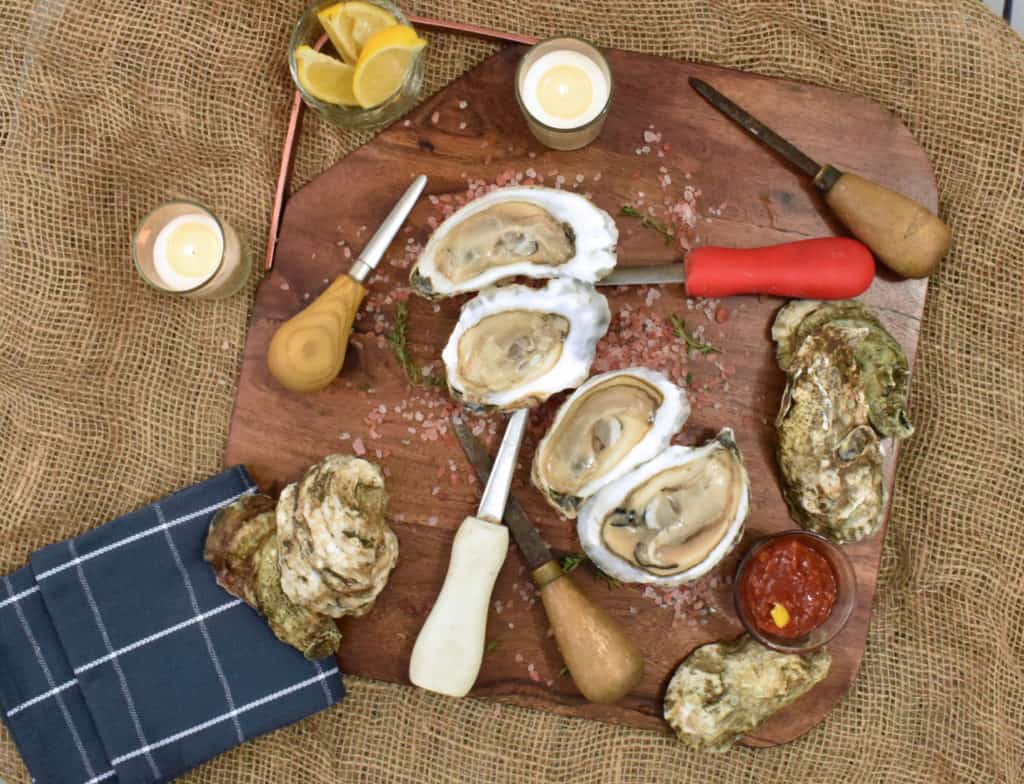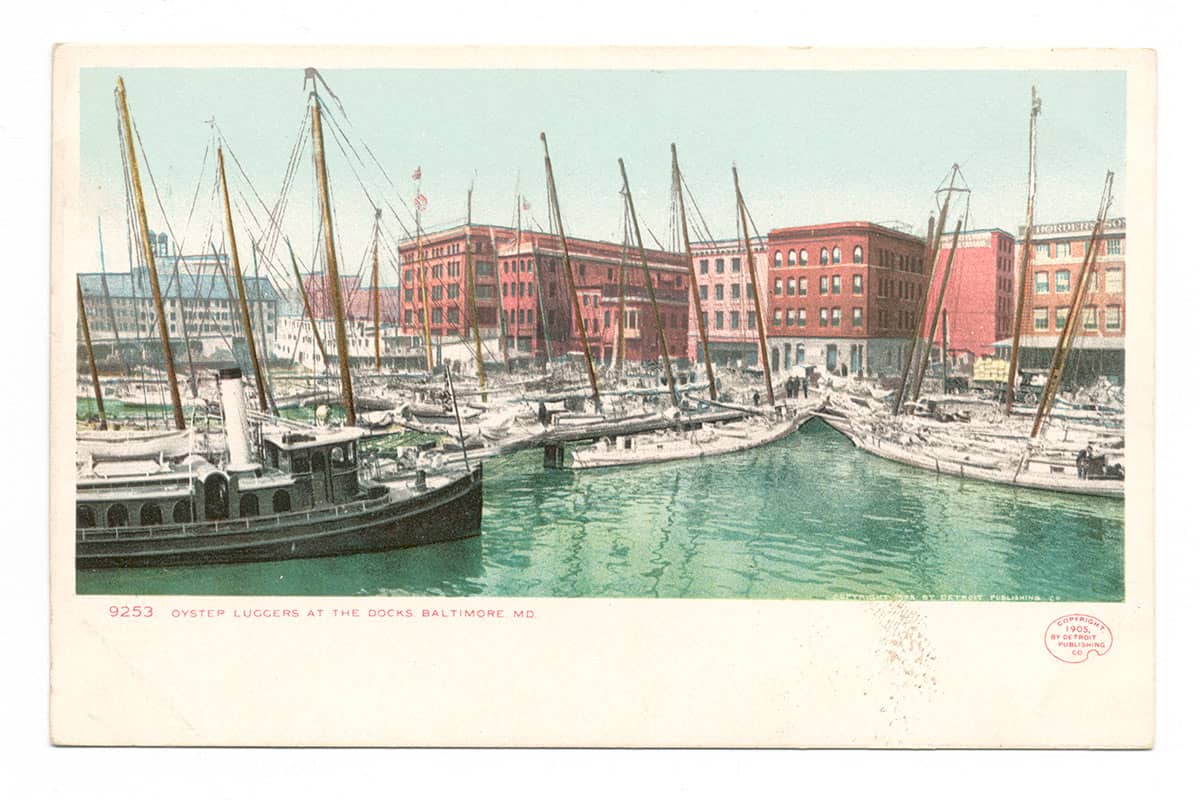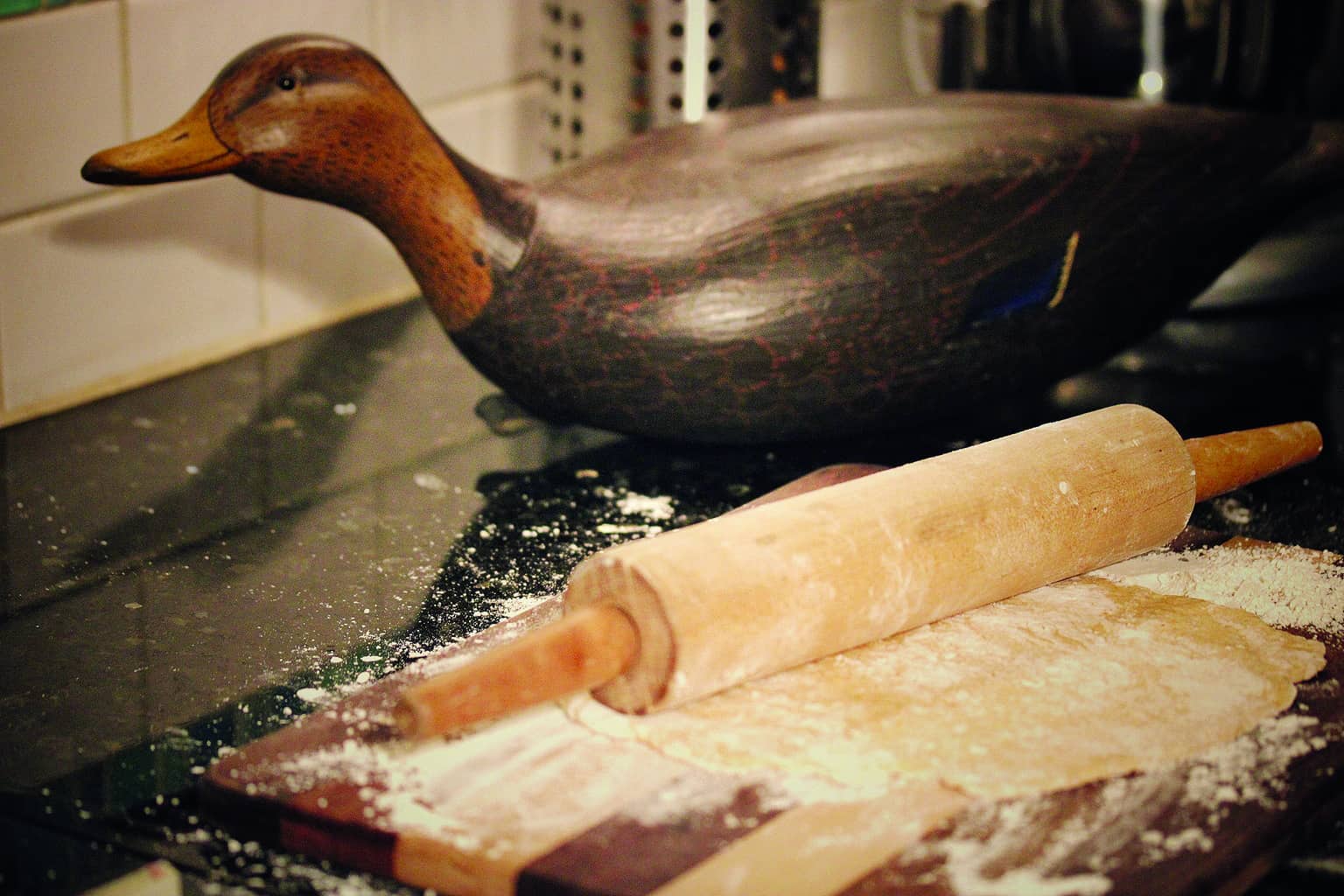A lot, especially when it comes to oysters
Oyster season is once again upon us, which is great news for bivalve lovers. But like everything in the COVID era, this year looks a little different. Due to indoor dining limits and the postponement of major oyster festivals in St. Mary’s City, Md. and Urbanna, Va., this season more of us may be forced to (gasp!) shuck our own oysters.
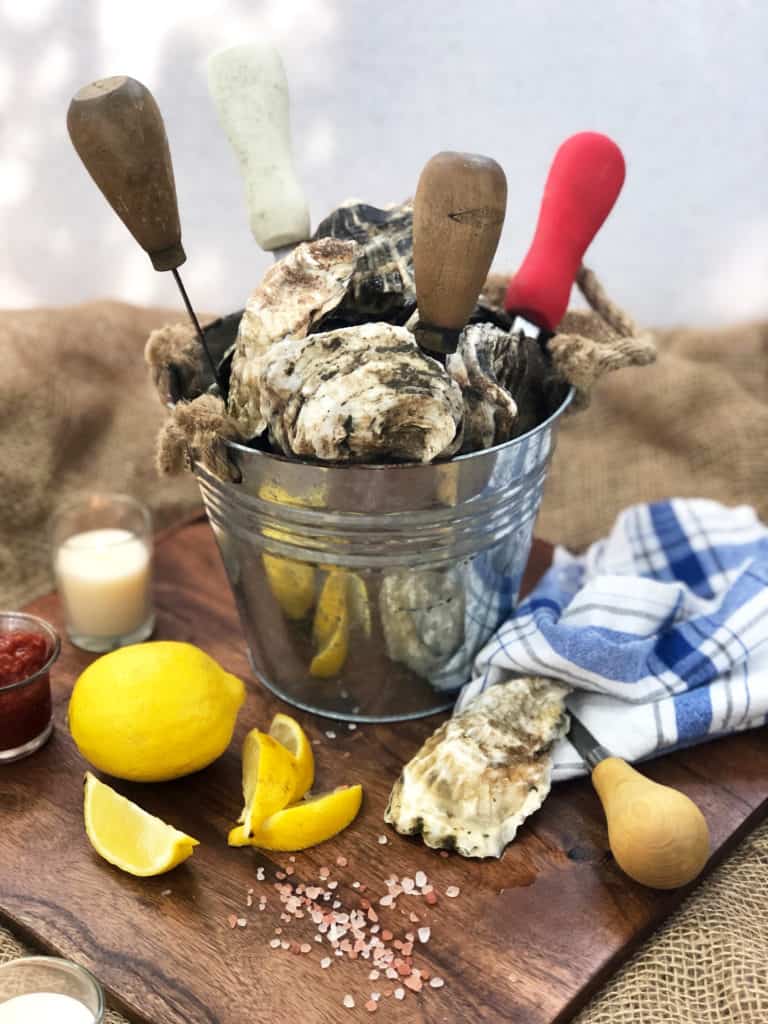
Just like the old joke about Carnegie Hall, the best way to become a good shucker is practice, practice, practice. But it also requires a good knife. We asked some expert shuckers to share their thoughts on the tool of the trade.
Pete Woods has been shucking since he was 11—long before he created the menu for Rappahannock Oyster Company’s Merroir Tasting Room, or took on his current role running the raw bar at The Tides Inn in Irvington, Va. “Fancy is worse” when it comes oyster knives, he says; “simple is better.” Woods buys generic, wood-handled knives by the box at his local hardware store in Deltaville and then customizes them, carving finger pits in the handle to fit his hand. “I look for a narrow, sharp blade that you can easily wiggle into the bill or hinge,” he says—and then he hones the blade even more. “I can cut carpet with my knives; they’re dangerously sharp,” he chuckles.
Dan Worrell earned his skills as a shucker at Ryleigh’s Oyster in Baltimore’s Federal Hill, and today grows oysters at his farm, pairs bivalves with wine at his company Shell & Barrell, and works with the nonprofit Oyster Recovery Partnership. He agrees that a knife doesn’t have to be fancy to do its job; in fact, he finds a lot of his on the job doing shell recycling. “I look down in down in the pile and there’s an oyster knife,” he says. “I take them home and clean them, taking off the rust, and they’re good as new.”
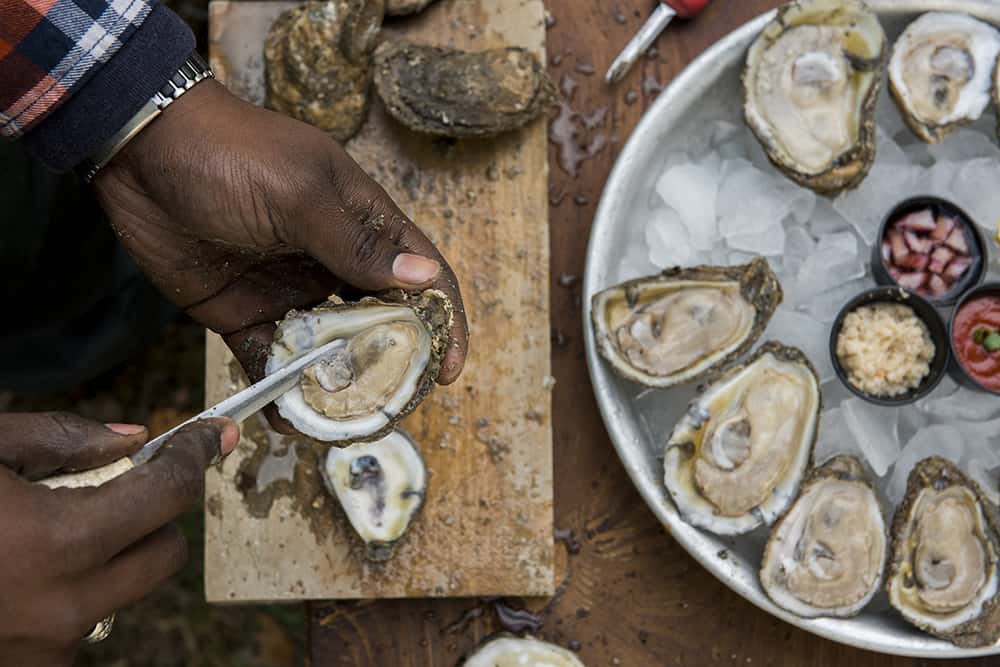
While most Mid-Atlantic shuckers go through the bill of the oyster, Worrell approaches the bivalve from the other end. “As a hinge shucker, I want a sturdier blade,” he says. “It’s good to have a sharp point, but what I really need is something that can walk me inside the handle of the hinge. You wiggle it in there until you feel it tighten, and when you get to that moment, it’s like turning your car engine and ‘pop’!”
His most treasured knives are the ones once owned by his great grandfather, a former lighthouse keeper, that were passed on to him by his grandmother. But for a good utilitarian knife, he’s partial to Dexter Russell’s Boston-style knife, with a 4-inch blade and a plastic handle. “The longer the blade is, the more feel I get.” But at the end of the day, which knife he uses really depends on the oyster. “I’ll bring three or four different knives with me, depending on the event.”
Gardner Douglas grew up near Chincoteague on Virginia’s Eastern Shore, and learned the skill from his father, a professional oyster shucker. Douglas continues the tradition with his D.C.-based mobile S.S. Shucking Service, while also competing nationally and running the Oyster Ninja podcast. “The first thing I’m looking at is the handle,” he says of the quest for the perfect knife. “It’s all about comfort; if you’re not comfortable, it’s going to be hard to shuck.”
Like Woods, Douglas customizes his knives. “I get a regular Dexter knife and grind down the blade,” he says. “It’s durable, restaurant quality, and with a grinder you can make any knife your knife…. My cut on oysters is real particular, just like the way I like my knives.” It also depends on what kind of oyster he’s shucking. “For wild oysters, I like a sturdy knife, like a Dexter 22 or Toad Fish. But for farm raised, it’s more than likely a Dale German. That’s the best knife for farm-raised, bill-shucking oysters.”
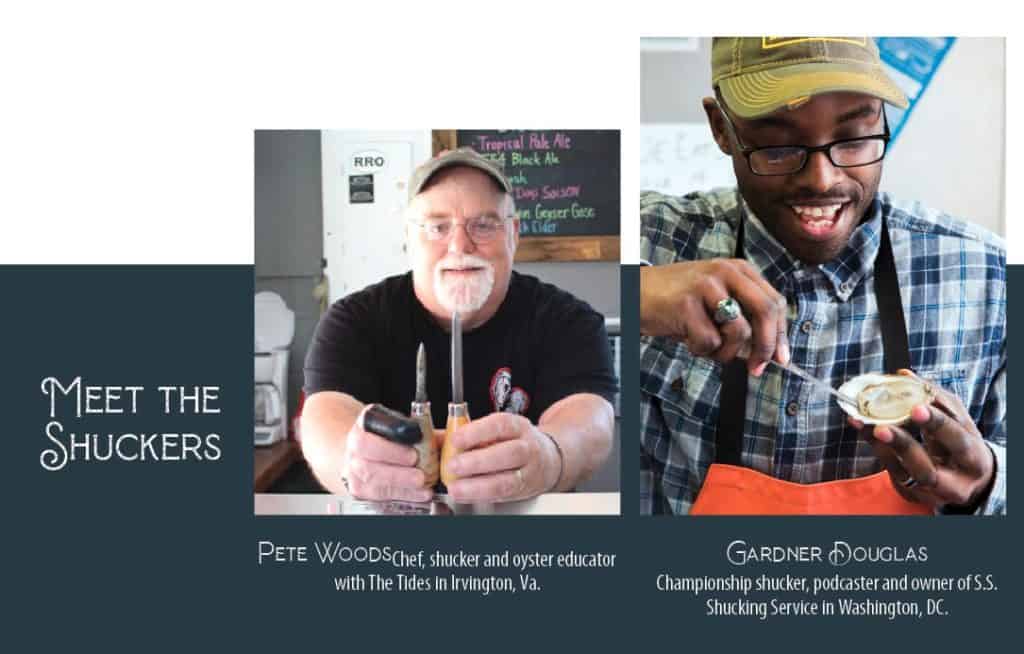
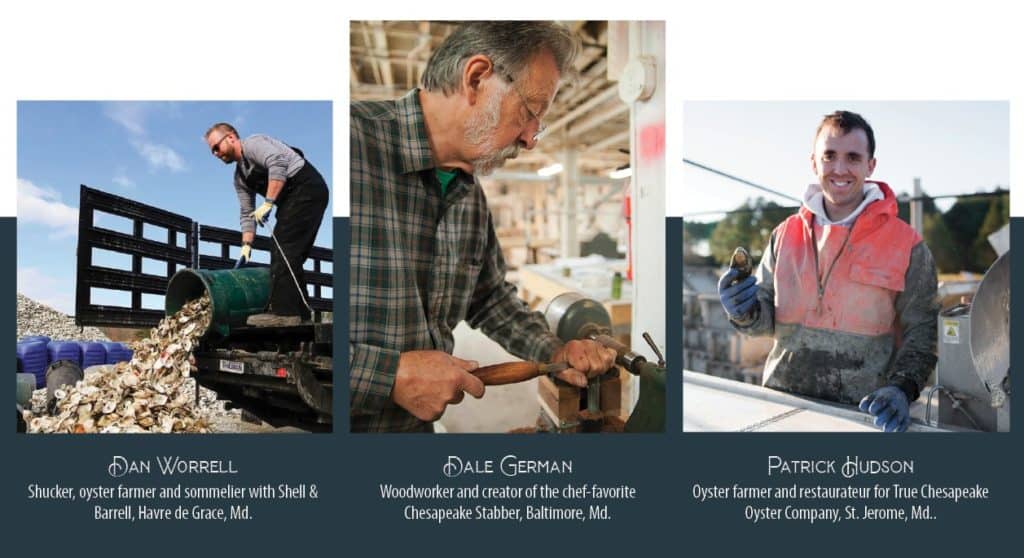
You can’t be around shuckers for long without hearing the name Dale German. The Baltimore woodworker got turned onto oysters about 15 years ago, when he heard Bill Devine, owner of Baltimore’s reknowned Faidley’s Seafood, complaining how he hadn’t been able to find a good oyster knife since Crisfield-based cutlery company Carvel Hall went out of business. Intrigued, he turned to U.S. National Championship winning shucker George Hastings for advice. “George has been shucking since he was a teenager,” says Dale, who started by taking measurements of Hastings’ favorite knives. “The size and shape of blade of what he was using was very different from any commercial knife you could get. So I started making a few here and there, and refining them over a period of time.”
The result is the Chesapeake Stabber, which is the cult favorite for regional chefs and shuckers. It’s lighter than a traditional knife, with a pear-shaped handle typically made from white oak and a shorter blade than you’ll find on many other commercial knives. “The blade only needs to be long enough to reach the abductor muscle,” he says. “Mostly I make them 2 3/8 to 2 1/2 inches; some guys like them even shorter.” Designed for bill shucking, German says the secret lies in the thinner blade. “It’s easy to put in between the shell.”
Patrick Hudson, oyster farmer and co-owner of Baltimore’s True Chesapeake Oyster Co., agrees. “The original Dale German knife is definitely my favorite. It has a super thin blade that flexes slightly when you put pressure on it, but it’s sturdy as heck.” Hudson prizes his ‘original Dale’ gifted to him by George Hastings, with a handle made from the wood of Maryland’s fallen Wye Oak. “I keep it safe and only use it on special occasions.”
In fact, he is such a fan of Dale’s knives that he and True Chesapeake partner Nick Schauman (also of Baltimore’s The Local Oyster) worked with Dale and George to make their own version, designed for newbie shuckers. “It’s built to last and withstand a few shucking errors without breaking,” says Hudson. “But it’s thin and nimble enough to shuck farm-raised oysters.”
True Chesapeake sells theirs online at Truechesapeake.com, or you can reach out to German directly for his custom knives, which he sells in person, “a little bit here and there.”
Which is how I ended up in a parking lot on a late August afternoon, selecting a mulberry-handled beauty from the array of knives lined up on the trunk shade of Dale’s red hatchback. Because oyster season is coming, and I don’t plan to miss out, even if I have to shuck a few myself. And as I’m quickly learning, with the right tool in hand, shucking oysters can be almost as addictive as eating them.

